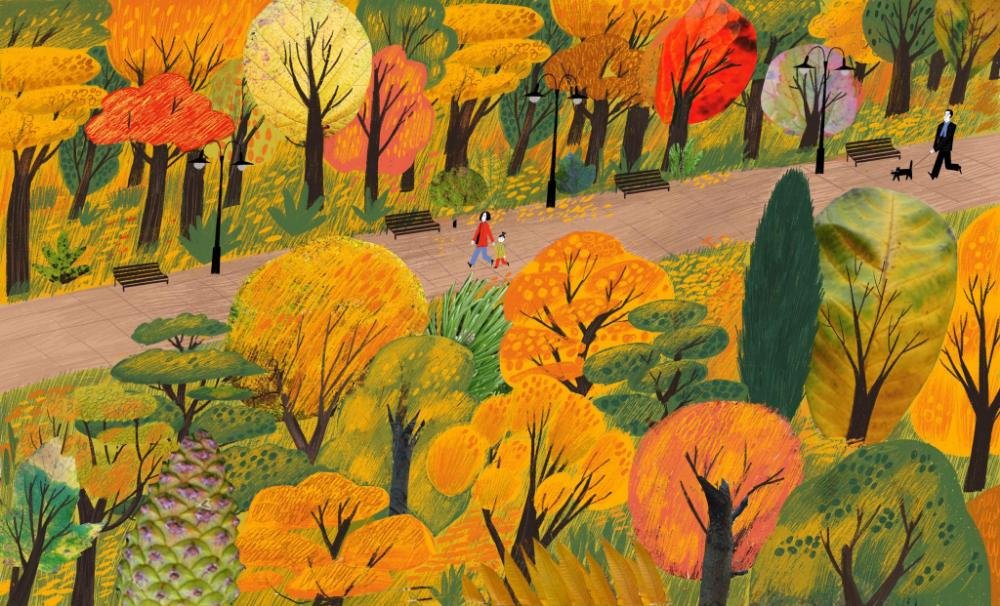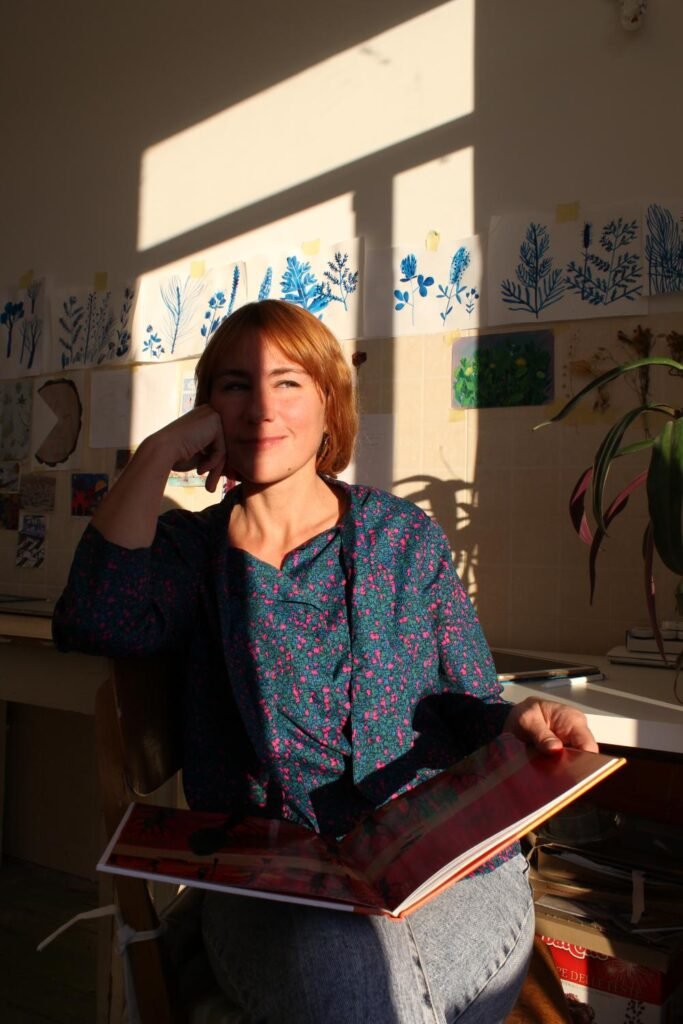Artists are some of the world’s most important activists, helping us to make meaning from human folly and tragedy. They help translate emotions into something tangible we can understand. Oksana Drachkovska built her art career working with publishing houses and magazines, earning notoriety and prizes for her illustration of children’s books. In 2020, her book ‘The Jumpless Bunny and His Brave Mother’ won Best Literature for Children from ages six to eight in Ukraine’s Lviv Book Fair.
On February 28, 2022, Oksana packed her bags to escape Lviv, not sure if or when she would ever return. She fled a home she knew and loved, leaving friends and family behind or scattered across neighbouring countries. Her journey led her to Barcelona, where she found refuge in the homes of fellow artists and art lovers. In her new home, Oksana continued to draw, but her subjects changed dramatically. She is one of many artists and illustrators sharing perspectives on the war that is ravaging her home country for more than two and a half years.

How have you and other Ukrainian artists helped to raise awareness about the realities of what’s happening in Ukraine?
After leaving Ukraine, I found myself in Poland. I was filled with guilt and helplessness during those first few days. I was afraid to read the news. It was strange for me to look at people around me who felt so safe, while a few kilometers away citizens did not know whether they will wake up in the morning or ever see their home again. I even had thoughts of going back, but I understood that was an illogical emotional reaction.
When I came to my senses, I asked myself what I am best at and decided to help Ukraine with my art. At that time I didn’t have the strength to give an interview—I didn’t have the words. The only way to release my emotions was to paint what was inside me and what I saw happening in my country. I understood that my illustrations communicated a stronger message than I could ever transmit with words. My art doesn’t need translation and it’s not a photo; it’s a story that passes through me.
The Ukrainian community of illustrators around the world began to unite and organize exhibitions about the war. I began to understand that I was also helping with my art—I had not been silenced. For the first time in a long time the world wanted to hear about Ukraine. The artists in my country have had a lot to say for a long time, and now doors have been opened and people are listening. And I think art is the best language to explain what’s happening.

What role has storytelling played in your art?
Once I heard that the whole world is made of stories. That really touched me. I’ve contemplated for a long time on why stories are so important to me—it started when I was a child. I dreamt of being a writer, but when I learned to draw, it became harder to express myself with words. I realised that art is another language to be able to explain yourself with stories. That’s when I decided that art is what I wanted to dedicate my life to. I finished mural painting at the Academy of Arts in Lviv, but I went into illustration because I really wanted to tell stories.
People mistakenly believe that stories only exist in literature. The more I observe different kinds of art, the more I realise that stories are everywhere. They’re in architecture, music, advertising, sculpture … and it seems to me that when a storyteller knows how to tell stories truthfully and well, then it touches everyone, because stories are in all of us.
I started drawing about the war in Ukraine because it was difficult for me to speak about. I had very mixed emotions. Without knowing what I was going to draw, I just sat down and let the images flow through me. There is a discipline in psychotherapy that deals with the creation of stories. I tell stories to myself as a form of healing and treatment. My work is a way for me to escape the reality of what’s happening at home. When I work on other projects, I dive into other worlds. I don’t know how I would have survived emotionally during these last couple of years if it weren’t for my art.

How has your creative process been affected by the war?
Many of my current projects are related to the war. I never thought that I would draw tanks or rockets or soldiers; it was not my world at all. I also started to receive many new international customers since the onset of the war. At first this was frustrating. I found it upsetting that Ukrainian illustrators were not taken seriously. At the same time, I understand and accept that this is an opportunity for us to present ourselves and our country to the world. I’d like people to have a good impression of Ukrainians.
How have you adjusted to your new circumstances in Barcelona?
I have been in Barcelona for more than two years now. There have been so many moves, new acquaintances, people, and adventures. Right now I feel good about the city, which is inspiring because it is very open, multicultural, and creative.
The war experience has made me braver and taught me not to put off the things that inspire me and what I really want to do. I have discovered new activities such a embroidery, ceramics—which are very therapeutic for me—and I feel very happy to have finally started writing stories. I think all of these extreme circumstances have allowed me to believe in my own strengths.
What’s one thing you want to tell the world about Ukraine?
This question is very hard to answer. It brings up a lot of emotions, confused thoughts, and a lot of sadness.
The war still goes on, even if you hear less about it in the news. Please support us!
You can learn more about Oksana’s journey and artwork on Instagram and Behance.



Thanks for your interest in art & creativity on FrikiFish— a one-woman labor of love, providing free content and services to artists, art-lovers and creative projects in-and-around Barcelona. This project runs on caffeine and community love, please consider supporting with a donation or a cup of coffee. Thank you!